Canada, a land of sprawling landscapes and vibrant cities, often leaves people wondering: which city takes the crown as the largest? Is it the bustling streets of Toronto, the cultural heartbeat of Montreal, or the scenic charm of Vancouver? This question isn’t just about numbers—it’s about understanding the soul of Canada’s urban identity. From its economic might to its cultural influence, the largest city in Canada is a microcosm of the nation’s diversity and ambition.
Renowned urbanist Jane Jacobs once described cities as the engines of economic and cultural progress. Her insights into urban planning resonate deeply when examining Canada’s largest city. Similarly, Richard Florida, a leading expert on urban development, has highlighted how cities like Toronto attract talent and innovation. Even Malcolm Gladwell, in his exploration of societal dynamics, has touched on the unique role of urban centers in shaping national identity.
This article isn’t just a population count—it’s a journey into the heart of Canada’s urban landscape. We’ll explore the history, demographics, and economic significance of the largest city, while also looking at how technology, particularly AI, could shape its future. So, let’s dive into the question: What is the largest city in Canada?
Defining the Largest City in Canada
When we talk about the largest city in Canada, we’re not just counting heads—we’re looking at a complex web of factors that define urban life. Population is the most obvious metric, but it’s not the only one. Let’s break it down.
Population Metrics
Toronto takes the lead with over 2.9 million people within its city limits and more than 6 million in the Greater Toronto Area (GTA). Montreal follows with around 1.8 million in the city proper, while Vancouver trails with just over 700,000. But these numbers only tell part of the story. Historical population growth trends show that Toronto has consistently outpaced other Canadian cities, thanks to its economic opportunities and cultural appeal.
Geographical and Administrative Boundaries
City boundaries can be tricky. In Canada, cities are often defined by their administrative limits, but metropolitan areas paint a broader picture. Toronto’s growth was significantly boosted by the 1998 amalgamation, which merged six municipalities into one. This move not only increased its population but also streamlined governance and resource allocation.
Why Population Matters
Being the largest city isn’t just a bragging right—it’s a reflection of economic, cultural, and political influence. Toronto’s size makes it a magnet for businesses, talent, and innovation. It’s the financial hub of Canada, home to the Toronto Stock Exchange, and a global leader in industries like technology and film. Its cultural diversity, showcased in neighborhoods like Chinatown and Little Italy, makes it a microcosm of the world.
Toronto: The Economic Powerhouse
When it comes to economic muscle, Toronto flexes harder than a bodybuilder at a fitness expo. As Canada’s largest city, it’s not just a hub for maple syrup and hockey—it’s the beating heart of the nation’s economy. With a GDP that rivals entire countries, Toronto is a financial juggernaut that keeps Canada’s economic engine humming. But what makes this city such a powerhouse? Let’s break it down.
Economic Contributions
Toronto’s economy is a diverse and dynamic beast. The city contributes a staggering $400 billion to Canada’s GDP, making it the country’s economic epicenter. The financial sector is the crown jewel, with Bay Street often compared to Wall Street. Major players like the Royal Bank of Canada and TD Bank call Toronto home. But it’s not all about banking. The tech scene is booming, earning Toronto the nickname “Silicon Valley of the North.” Companies like Shopify and Uber have set up shop here, driving innovation and creating jobs. And let’s not forget the film industry—Toronto’s streets have doubled for New York in countless movies, earning it the title of “Hollywood North.”
Global Competitiveness
On the global stage, Toronto is a heavyweight contender. It consistently ranks among the top cities in the world for livability, innovation, and economic opportunity. The city is a magnet for international talent, with people from all over the globe flocking to its vibrant neighborhoods. Toronto’s Pearson International Airport is one of the busiest in North America, connecting the city to the world. And with a thriving arts scene, world-class universities like the University of Toronto, and a reputation for inclusivity, Toronto is a city that punches above its weight.
Challenges and Opportunities
But even the mightiest cities have their Achilles’ heel. Toronto’s rapid growth has brought challenges like housing affordability and infrastructure strain. The average home price in Toronto is enough to make your wallet cry, and traffic congestion can turn a quick commute into a marathon. But where there are challenges, there are opportunities. The city is investing in sustainable growth, with initiatives to improve public transit, build affordable housing, and reduce carbon emissions. And with AI and smart city technologies on the rise, Toronto is poised to tackle these issues head-on, ensuring it remains a global leader for years to come.
Cultural and Social Landscape
If Toronto’s economy is its brain, its culture is its soul. This city is a melting pot of diversity, where over 200 languages are spoken, and every corner tells a story. From its vibrant neighborhoods to its world-class arts scene, Toronto is a cultural kaleidoscope that never fails to inspire.
Multiculturalism
Toronto is often called the most multicultural city in the world, and for good reason. Over half of its residents were born outside of Canada, making it a true global village. Neighborhoods like Chinatown, Little Italy, and Greektown offer a taste of the world without ever leaving the city. The annual Caribbean Carnival is a riot of color and music, while the Taste of the Danforth festival celebrates Greek culture with food, dance, and fun. This diversity isn’t just a statistic—it’s the lifeblood of the city, shaping its identity and enriching its culture.
Arts and Entertainment
Toronto’s arts scene is as vibrant as its people. The city is home to the Toronto International Film Festival (TIFF), one of the most prestigious film festivals in the world. Stars like Ryan Reynolds and Margot Robbie have walked its red carpets, and it’s a launchpad for indie films and blockbusters alike. Music lovers flock to venues like the Massey Hall and the Roy Thomson Hall, while art aficionados can lose themselves in the Art Gallery of Ontario and the Royal Ontario Museum. Whether you’re into theater, music, or visual arts, Toronto has something to feed your soul.
Quality of Life
Living in Toronto isn’t just about work and play—it’s about quality of life. The city consistently ranks high in global livability indices, thanks to its excellent healthcare, education, and public services. Families can enjoy the city’s many parks and green spaces, like High Park and the Toronto Islands, while foodies can indulge in everything from street food to fine dining. And with a strong sense of community and a commitment to inclusivity, Toronto is a city where everyone can feel at home.
Urban Development and Infrastructure
Toronto’s growth as Canada’s largest city has brought both opportunities and challenges in urban development and infrastructure. From transportation networks to housing and sustainability initiatives, the city is constantly evolving to meet the needs of its residents while addressing pressing issues like congestion and affordability.
Transportation Networks
Toronto’s transportation system is a lifeline for its residents, but it’s also a source of frustration. The Toronto Transit Commission (TTC) operates one of the busiest public transit systems in North America, with subways, buses, and streetcars serving millions of commuters daily. However, overcrowding and delays are common complaints. The GO Transit network helps connect the Greater Toronto Area (GTA), but traffic congestion remains a significant issue. Future projects like the Ontario Line aim to alleviate some of these challenges, but progress has been slow.
Housing and Real Estate
Toronto’s real estate market is one of the most expensive in Canada, with skyrocketing housing prices making it difficult for many residents to afford a home. The average price of a detached home in Toronto now exceeds $1.5 million, pushing many families to the suburbs. The city has introduced policies like the Housing Now Initiative to increase affordable housing, but demand continues to outpace supply. Key challenges include:
- Limited land availability for new developments.
- High construction costs.
- Speculative investment driving up prices.
Sustainability Initiatives
As a global city, Toronto is committed to sustainability and environmental stewardship. The city has set ambitious goals to reduce carbon emissions and promote renewable energy. Projects like the TransformTO initiative aim to achieve net-zero emissions by 2040. Green spaces like High Park and the Toronto Botanical Garden provide residents with access to nature, while policies encourage energy-efficient buildings and waste reduction. However, balancing growth with sustainability remains a challenge.
The Future of Canada’s Largest City
Toronto’s future is both exciting and uncertain. As the city continues to grow, it must address critical issues like population growth, technological advancements, and global challenges to remain a vibrant and livable metropolis.
Population Projections
By 2031, Toronto’s population is expected to reach 3.5 million, with the GTA surpassing 8 million. This growth will put pressure on infrastructure, housing, and public services. The city must plan strategically to accommodate new residents while maintaining quality of life. Key considerations include:
- Expanding public transit to reduce congestion.
- Building more affordable housing units.
- Ensuring access to healthcare and education.
Technological Advancements
Toronto is at the forefront of technological innovation, with initiatives like the Sidewalk Toronto project exploring smart city solutions. AI and automation are expected to play a significant role in urban management, from traffic control to energy efficiency. Partnerships with institutions like the University of Toronto and companies like IBM Canada are driving research and development in this area.
Global Challenges
Climate change poses a significant threat to Toronto, with risks like flooding, extreme heat, and air pollution. The city is investing in resilience strategies, such as upgrading stormwater systems and increasing green infrastructure. Additionally, Toronto must navigate global economic shifts and competition from other cities to maintain its status as a leading global hub. By embracing innovation and sustainability, Toronto can continue to thrive in the face of these challenges.
AI Solutions: How Could AI Help?
Artificial Intelligence (AI) is no longer a futuristic concept—it’s a transformative force reshaping cities worldwide. For Toronto, Canada’s largest city, AI offers unprecedented opportunities to tackle urban challenges like traffic congestion, housing affordability, and environmental sustainability. By integrating AI into urban management, Toronto can not only solve pressing issues but also set a global benchmark for smart city innovation.
Traffic Management
Toronto’s traffic congestion is a well-documented headache for commuters. AI-powered solutions can revolutionize how the city manages its transportation networks. For instance, IBM’s smart city initiatives demonstrate how AI can optimize traffic lights in real-time, reducing wait times and improving flow. Additionally, predictive modeling can enhance public transit systems like the TTC and GO Transit, ensuring buses and trains run efficiently during peak hours.
Housing Solutions
Housing affordability remains a critical issue in Toronto. AI can analyze vast datasets to identify trends and inform policy decisions. For example, machine learning algorithms can predict housing demand and suggest optimal locations for new developments. Smart zoning, powered by AI, can ensure land use aligns with community needs. Collaborations with institutions like the University of Toronto can further refine these models, making them more accurate and actionable.
Environmental Sustainability
Toronto’s commitment to sustainability can be amplified with AI. Energy efficiency in buildings can be optimized using AI-driven systems that monitor and adjust energy consumption. Predictive analytics can also help manage climate risks, such as flooding or extreme weather events. Initiatives like McKinsey’s urban planning strategies highlight how AI can integrate renewable energy sources into the city’s infrastructure, reducing its carbon footprint.
Public Services
AI can enhance public services by making them more accessible and efficient. Chatbots, like those developed by Google AI, can handle citizen inquiries, freeing up human resources for more complex tasks. Predictive policing systems can analyze crime data to allocate resources effectively, improving public safety. Emergency response systems can also benefit from AI, ensuring faster and more coordinated reactions to crises.
Action Schedule/Roadmap (Day 1 to Year 2)
Day 1: Assemble a task force of urban planners, AI experts, and policymakers. Key stakeholders include the City of Toronto, IBM Canada, and the University of Toronto.
Day 2: Conduct a comprehensive data audit of the city’s infrastructure and services to identify areas for AI integration.
Week 1: Launch pilot projects for AI-powered traffic management, focusing on high-congestion areas like the Gardiner Expressway.
Week 2: Begin AI-driven analysis of housing data to identify trends and inform policy decisions.
Month 1: Develop a framework for smart city initiatives, incorporating AI into transportation, housing, and sustainability projects.
Month 2: Partner with tech companies like Google and Microsoft for research and development.
Year 1: Implement AI solutions in key areas, including traffic management, housing analysis, and energy efficiency.
Year 1.5: Evaluate the impact of AI initiatives and scale successful projects across the city.
Year 2: Establish Toronto as a global leader in smart city innovation, showcasing its AI-driven solutions as a model for other urban centers.
Toronto’s Bright Future: A City Transformed by AI
Toronto’s status as Canada’s largest city is both a privilege and a challenge. Its vibrant culture, economic strength, and diverse population make it a global powerhouse, but these same attributes also bring complex urban issues. By embracing AI, Toronto can address these challenges head-on, transforming itself into a smarter, more sustainable city.
Imagine a Toronto where traffic flows seamlessly, housing is affordable, and the environment is protected. This vision is not just a dream—it’s a tangible future made possible by AI. From optimizing public transit to predicting housing needs, AI offers solutions that are both innovative and practical. The city’s commitment to sustainability can be further strengthened with AI-driven energy systems and climate risk management.
But the true power of AI lies in its ability to adapt and evolve. As Toronto grows, so too will its AI capabilities, ensuring the city remains at the forefront of urban innovation. By leveraging the expertise of institutions like the University of Toronto and partnering with tech giants like IBM, Toronto can set a global example for how cities can thrive in the 21st century.
As we look to the future, one thing is clear: Toronto’s potential is limitless. With AI as its ally, the city can overcome its challenges and continue to shine as a beacon of progress and possibility. The question is not whether Toronto can achieve this vision, but how quickly it can make it a reality. The journey begins now, and the world is watching.
FAQ
Q1: What is the population of Toronto?
A: Toronto has a population of over 2.9 million in the city proper and more than 6 million in the Greater Toronto Area (GTA).
Q2: How does Toronto compare to other Canadian cities?
A: Toronto is the largest city in Canada by population, followed by Montreal and Vancouver.
Q3: What are the main industries in Toronto?
A: Key industries in Toronto include:
Q4: How is AI being used in Toronto?
A: AI is being used in Toronto for:
- Traffic management through smart city solutions
- Housing analysis to address affordability
- Environmental sustainability initiatives
Q5: What are the biggest challenges facing Toronto?
A: Major challenges include:
- Housing affordability
- Traffic congestion
- Climate change
Q6: What is the future of Toronto?
A: Toronto is expected to continue growing, with a focus on:
- Smart city initiatives
- Sustainable development
- Innovation in technology and urban planning
Q7: What are some iconic landmarks in Toronto?
A: Iconic landmarks include:
Q8: How does Toronto rank globally?
A: Toronto is consistently ranked as one of the most liveable cities in the world and is a major hub for international trade and investment.
Q9: What role does the University of Toronto play in the city?
A: The University of Toronto is a leading institution in research and innovation, contributing to the city’s reputation as a center for education and technology.
Q10: How can I stay updated on Toronto news?
A: For the latest updates, visit Toronto News on Inthacity.
Wait! There's more...check out our gripping short story that continues the journey: The Veins Beneath the City
Disclaimer: This article may contain affiliate links. If you click on these links and make a purchase, we may receive a commission at no additional cost to you. Our recommendations and reviews are always independent and objective, aiming to provide you with the best information and resources.
Get Exclusive Stories, Photos, Art & Offers - Subscribe Today!
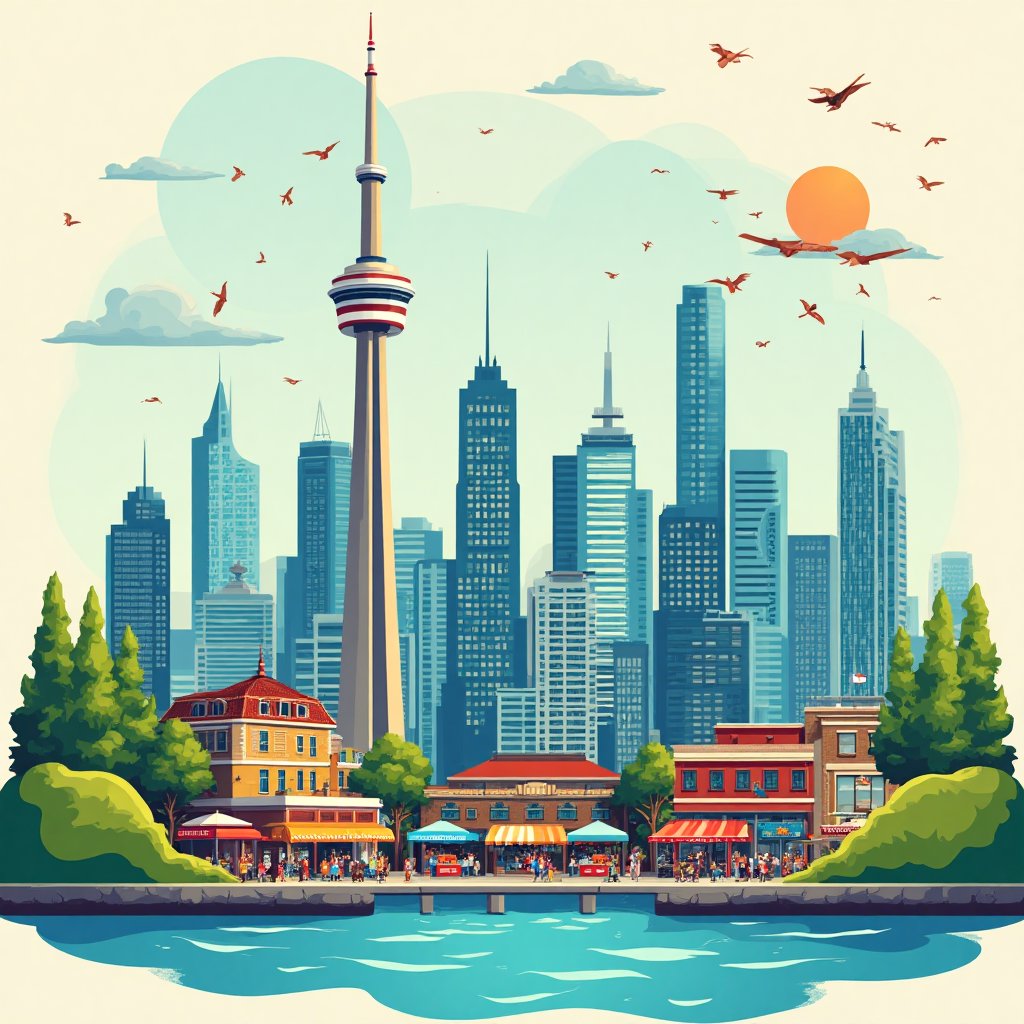
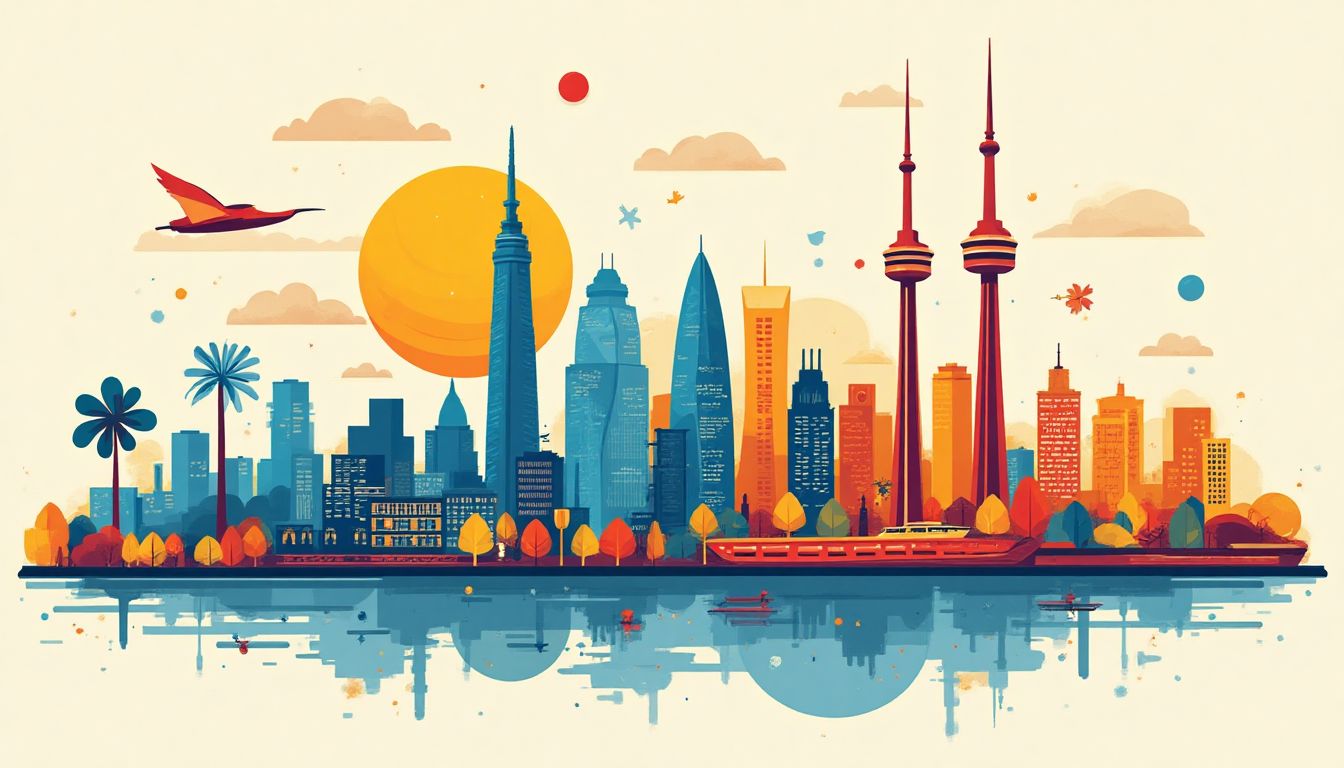
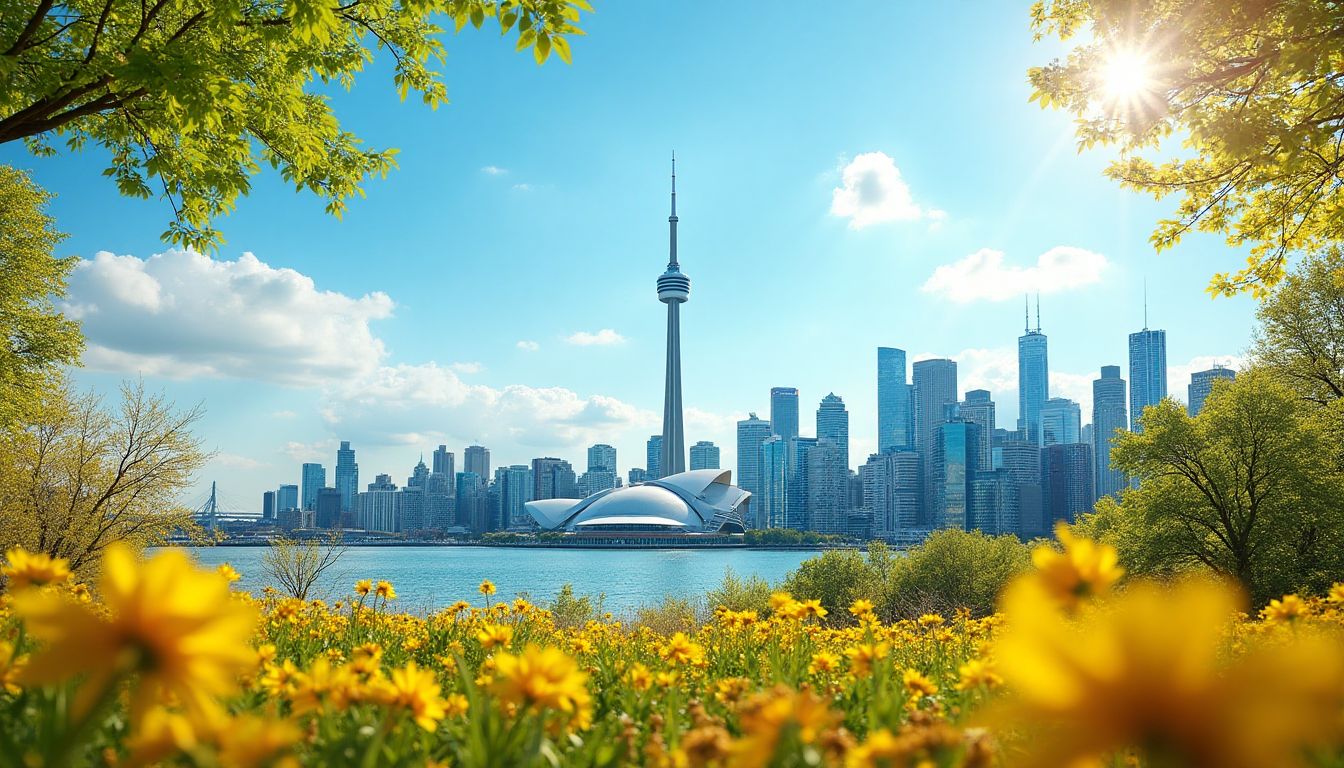
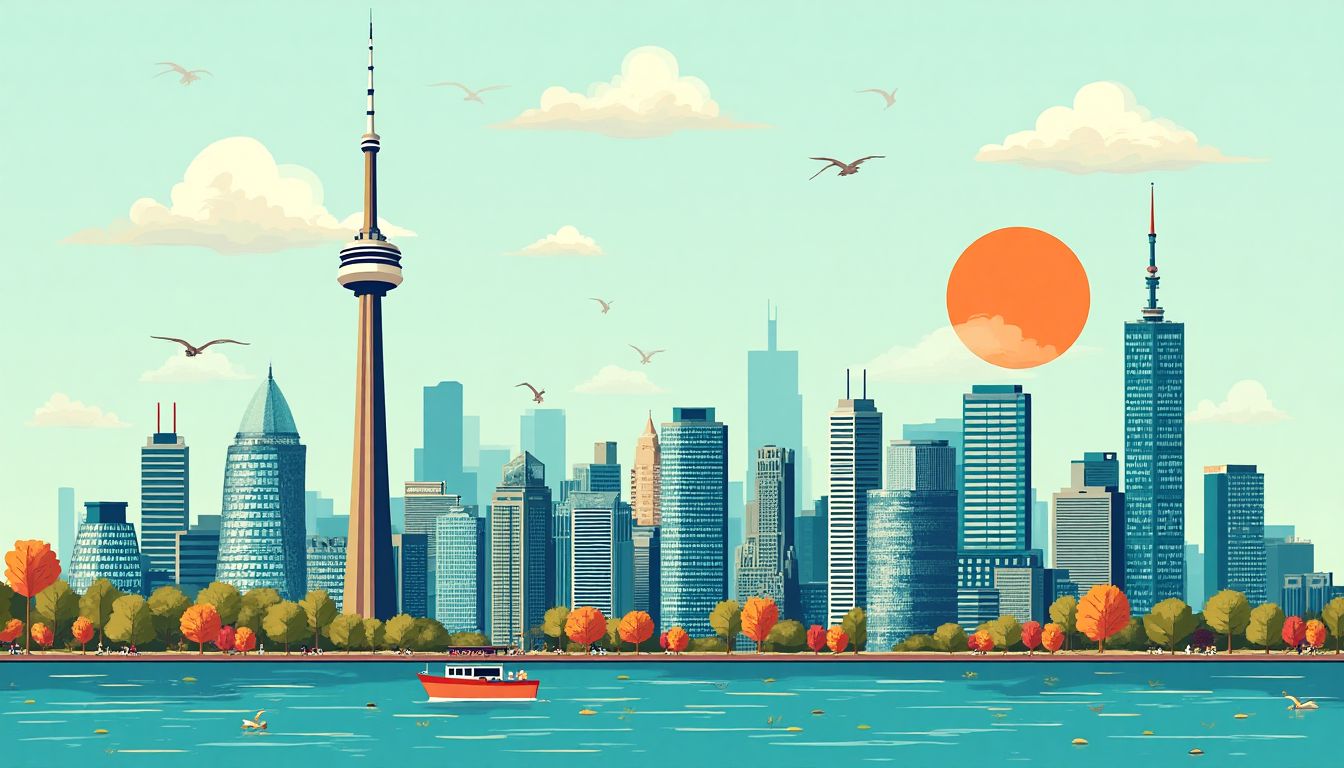


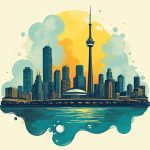
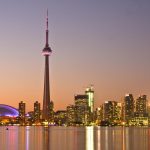

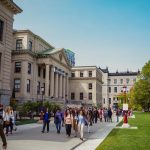



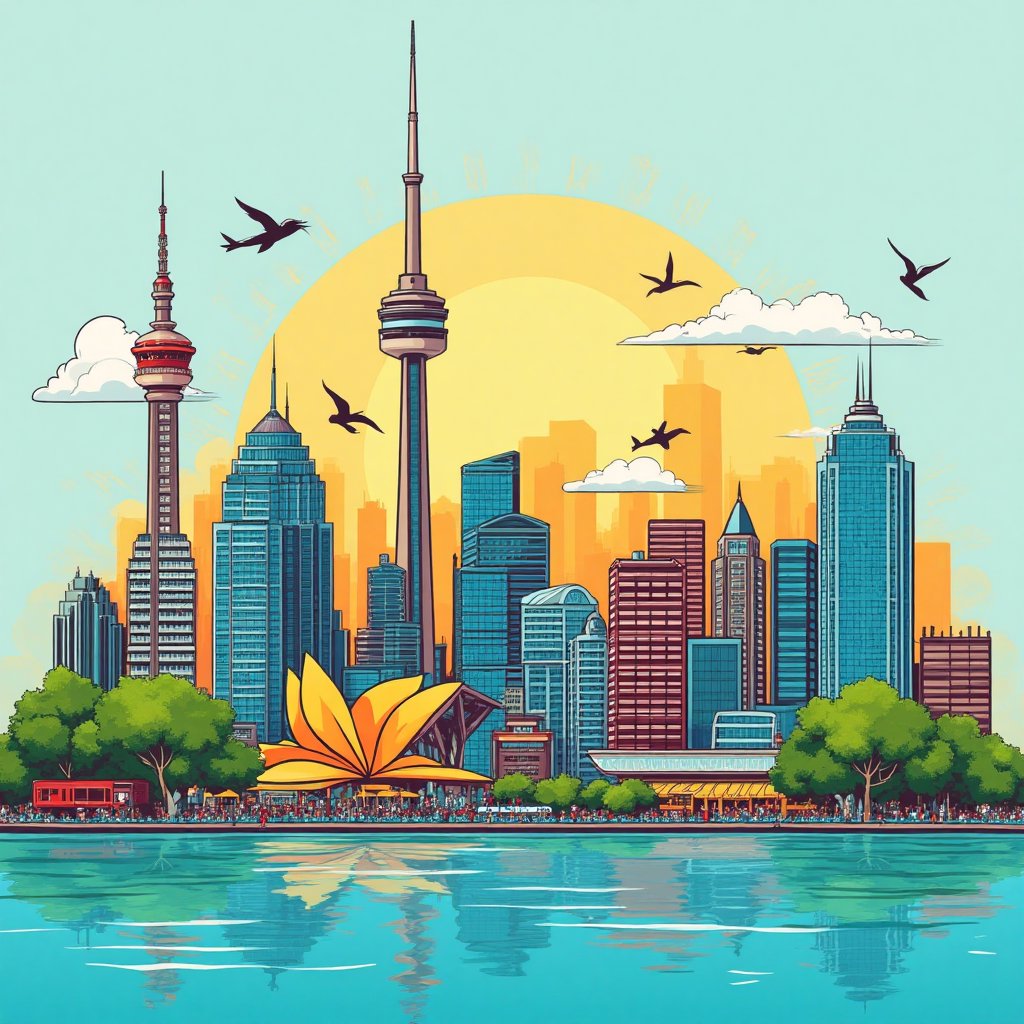















Post Comment
You must be logged in to post a comment.